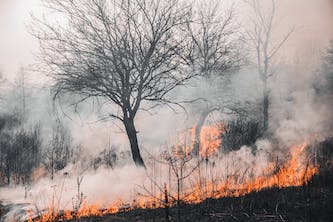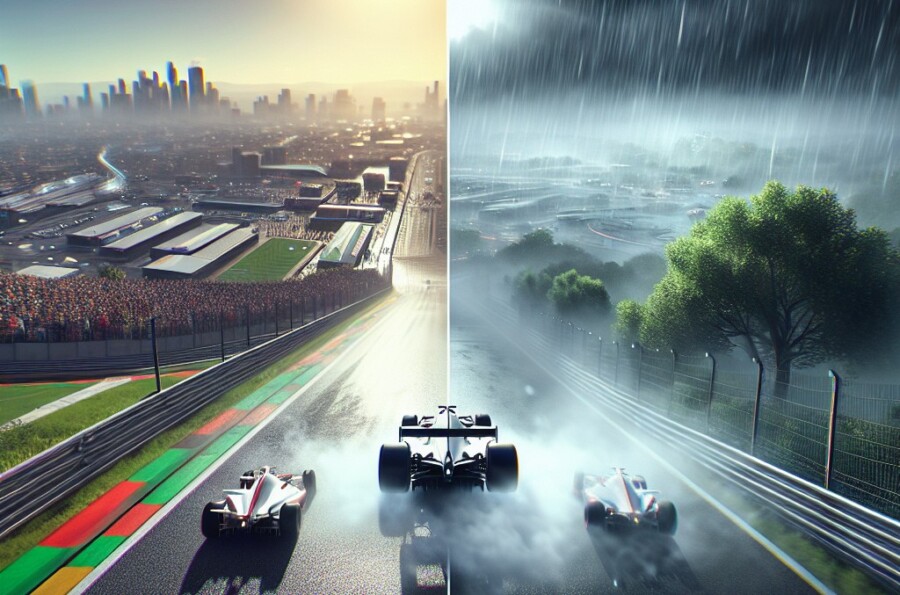A big fire happened in a factory in South Korea, killing at least 22 people. The fire started on Monday morning in a city called Hwaseong, near Seoul. Firefighters worked for hours to stop the fire, using dry sand. They don’t know yet why the batteries exploded, but lithium batteries can explode if they get too hot or are damaged.
The factory had about 35,000 battery cells on the second floor. The fire spread very fast, giving workers little time to get out. Firefighters used dry sand because water can make lithium fires worse. Even after the fire was put out, there is still a chance it could start again because of the chemicals.
South Korea makes a lot of lithium batteries for things like electric cars and laptops. The bodies of the people who died are badly burned, making it hard to know who they are. Eight people were also hurt in the fire, and two of them are very seriously injured.
Original news source: Exploding batteries spark deadly S Korea factory fire (BBC)
🎧 Listen:
Slow
Normal
Fast
📖 Vocabulary:
| 1 | factory | A building where things are made |
| 2 | firefighters | People who put out fires |
| 3 | exploded | Burst with a loud noise |
| 4 | lithium | A type of metal used in batteries |
| 5 | spread | Moved to more places |
| 6 | chemicals | Substances used in science and industry |
| 7 | injured | Hurt or harmed |
| 8 | seriously | Very badly |
| 9 | batteries | Things that store energy for later use |
| 10 | electric | Using electricity |
| 11 | laptops | Small computers you can carry around |
| 12 | burned | Damaged by fire |
Group or Classroom Activities
Warm-up Activities:
– News Summary
Instructions: In pairs, students will read the article and write a summary of the main points in their own words. They should focus on key details such as the location of the fire, the cause, and the number of casualties. Afterward, they can share their summaries with the class.
– Vocabulary Pictionary
Instructions: Divide the class into teams. One person from each team will come to the front of the class and be shown a vocabulary word from the article. They must then draw a picture on the board to represent the word, while their team members try to guess what it is. The team that guesses correctly earns a point.
– Headline Creation
Instructions: In small groups, students will brainstorm and create a catchy headline for the news article. They should aim to capture the main idea and intrigue the reader. Each group will present their headline to the class and explain their reasoning behind it.
– Think-Pair-Share
Instructions: Students will individually think about and write down their opinions on the following question: “Do you think lithium batteries are safe? Why or why not?” They will then pair up with a classmate and share their thoughts, discussing any similarities or differences in their opinions. Finally, some pairs can share their opinions with the whole class.
– Future Predictions
Instructions: In pairs, students will discuss and make predictions about the future of lithium batteries. They can consider questions such as: “How do you think battery safety can be improved?” or “What other uses for lithium batteries might we see in the future?” Each pair will share their predictions with the class.
🤔 Comprehension Questions:
1. What happened in South Korea?
2. Where did the fire start?
3. How did firefighters try to stop the fire?
4. Why do lithium batteries explode?
5. Where were the battery cells in the factory?
6. Why did firefighters use dry sand instead of water?
7. What are some things that South Korea makes with lithium batteries?
Go to answers ⇩
🎧✍️ Listen and Fill in the Gaps:
A big (1)______ happened in a factory in (2)______ Korea, killing at least 22 people. The fire started on Monday morning in a city called Hwaseong, near (3)______. Firefighters worked for hours to stop the fire, using dry sand. They don’t know yet why the (4)______ exploded, but lithium batteries can explode if they get too hot or are (5)______.
The (6)______ had about 35,000 battery cells on the second floor. The fire spread very fast, giving workers little time to get out. Firefighters used dry (7)______ because water can make (8)______ (9)______ worse. Even after the fire was put out, there is still a chance it could start again because of the chemicals.
South Korea makes a lot of lithium batteries for things like (10)______ cars and laptops. The (11)______ of the people who died are badly (12)______, making it hard to know who they are. Eight people were also hurt in the fire, and two of them are very seriously injured.
Go to answers ⇩
💬 Discussion Questions:
Students can ask a partner these questions, or discuss them as a group.
1. What is a factory?
2. How would you feel if you were working in the factory when the fire started?
3. Do you like using lithium batteries? Why or why not?
4. What do you think caused the batteries to explode in the factory?
5. How do you think the firefighters felt while they were trying to stop the fire?
6. What is a lithium battery used for?
7. How would you feel if you were one of the injured people in the fire?
8. Do you think it’s important for factories to have safety measures in place? Why or why not?
9. How do you think the families of the people who died in the fire feel?
10. What would you do if you saw a fire in a building?
11. Do you think the fire could have been prevented? Why or why not?
12. How do you think the community near the factory is affected by the fire?
Individual Activities
📖💭 Vocabulary Meanings:
Match each word to its meaning.
Words:
1. factory
2. firefighters
3. exploded
4. lithium
5. spread
6. chemicals
7. injured
8. seriously
9. batteries
10. electric
11. laptops
12. burned
Meanings:
(A) A type of metal used in batteries
(B) Hurt or harmed
(C) Small computers you can carry around
(D) Substances used in science and industry
(E) Very badly
(F) Burst with a loud noise
(G) A building where things are made
(H) Damaged by fire
(I) People who put out fires
(J) Moved to more places
(K) Using electricity
(L) Things that store energy for later use
Go to answers ⇩
🔡 Multiple Choice Questions:
1. Where did the fire happen?
(a) South Korea
(b) China
(c) Japan
(d) North Korea
2. How many people were killed in the fire?
(a) At least 22
(b) Exactly 35
(c) More than 50
(d) Less than 10
3. What city was the fire in?
(a) Seoul
(b) Busan
(c) Hwaseong
(d) Incheon
4. What did firefighters use to stop the fire?
(a) Water
(b) Foam
(c) Fire extinguishers
(d) Dry sand
5. Why can lithium batteries explode?
(a) If they are left in the sun
(b) If they are dropped on the ground
(c) If they are not used for a long time
(d) If they get too hot or are damaged
6. How many battery cells were in the factory?
(a) About 50,000
(b) About 20,000
(c) About 35,000
(d) About 10,000
7. Why did firefighters use dry sand instead of water?
(a) Water is not easily available
(b) Water can make lithium fires worse
(c) Dry sand is cheaper
(d) Dry sand is more effective
8. What does South Korea make a lot of lithium batteries for?
(a) Mobile phones and cameras
(b) Electric cars and laptops
(c) Watches and calculators
(d) Televisions and radios
Go to answers ⇩
🕵️ True or False Questions:
1. They don’t know yet why the batteries exploded, but they think it might be because they got too hot or were damaged.
2. The factory had a few battery cells on the second floor, about 35 of them.
3. The fire started on Monday morning in a city called Hwaseong, near Seoul.
4. A fire happened in a factory in South Korea and fortunately, 22 people died.
5. Water can make lithium fires better, so firefighters used dry sand instead.
6. Even after the fire was put out, there is no chance it could start again because of the chemicals.
7. Firefighters used dry sand to try and stop the fire from spreading.
8. The fire spread very quickly, so the workers didn’t have much time to get out.
Go to answers ⇩
📝 Write a Summary:
Write a summary of this news article in two sentences.
Check your writing now with the best free AI for English writing!
Writing Questions:
Answer the following questions. Write as much as you can for each answer.
Check your answers with our free English writing assistant!
1. What happened in South Korea that caused a big fire?
2. Where did the fire start?
3. How did the firefighters try to stop the fire?
4. Why did the firefighters use dry sand instead of water?
5. What are some things that South Korea makes with lithium batteries?
✅ Answers
🤔✅ Comprehension Question Answers:
1. What happened in South Korea?
A big fire happened in a factory in South Korea.
2. Where did the fire start?
The fire started in a city called Hwaseong, near Seoul.
3. How did firefighters try to stop the fire?
Firefighters used dry sand to try to stop the fire.
4. Why do lithium batteries explode?
Lithium batteries can explode if they get too hot or are damaged.
5. Where were the battery cells in the factory?
The battery cells were on the second floor of the factory.
6. Why did firefighters use dry sand instead of water?
Firefighters used dry sand because water can make lithium fires worse.
7. What are some things that South Korea makes with lithium batteries?
South Korea makes things like electric cars and laptops with lithium batteries.
Go back to questions ⇧
🎧✍️✅ Listen and Fill in the Gaps Answers:
(1) fire
(2) South
(3) Seoul
(4) batteries
(5) damaged
(6) factory
(7) sand
(8) lithium
(9) fires
(10) electric
(11) bodies
(12) burned
Go back to questions ⇧
📖💭✅ Vocabulary Meanings Answers:
1. factory
Answer: (G) A building where things are made
2. firefighters
Answer: (I) People who put out fires
3. exploded
Answer: (F) Burst with a loud noise
4. lithium
Answer: (A) A type of metal used in batteries
5. spread
Answer: (J) Moved to more places
6. chemicals
Answer: (D) Substances used in science and industry
7. injured
Answer: (B) Hurt or harmed
8. seriously
Answer: (E) Very badly
9. batteries
Answer: (L) Things that store energy for later use
10. electric
Answer: (K) Using electricity
11. laptops
Answer: (C) Small computers you can carry around
12. burned
Answer: (H) Damaged by fire
Go back to questions ⇧
🔡✅ Multiple Choice Answers:
1. Where did the fire happen?
Answer: (a) South Korea
2. How many people were killed in the fire?
Answer: (a) At least 22
3. What city was the fire in?
Answer: (c) Hwaseong
4. What did firefighters use to stop the fire?
Answer: (d) Dry sand
5. Why can lithium batteries explode?
Answer: (d) If they get too hot or are damaged
6. How many battery cells were in the factory?
Answer: (c) About 35,000
7. Why did firefighters use dry sand instead of water?
Answer: (b) Water can make lithium fires worse
8. What does South Korea make a lot of lithium batteries for?
Answer: (b) Electric cars and laptops
Go back to questions ⇧
🕵️✅ True or False Answers:
1. They don’t know yet why the batteries exploded, but they think it might be because they got too hot or were damaged. (Answer: True)
2. The factory had a few battery cells on the second floor, about 35 of them. (Answer: False)
3. The fire started on Monday morning in a city called Hwaseong, near Seoul. (Answer: True)
4. A fire happened in a factory in South Korea and fortunately, 22 people died. (Answer: False)
5. Water can make lithium fires better, so firefighters used dry sand instead. (Answer: False)
6. Even after the fire was put out, there is no chance it could start again because of the chemicals. (Answer: False)
7. Firefighters used dry sand to try and stop the fire from spreading. (Answer: True)
8. The fire spread very quickly, so the workers didn’t have much time to get out. (Answer: True)
Go back to questions ⇧













